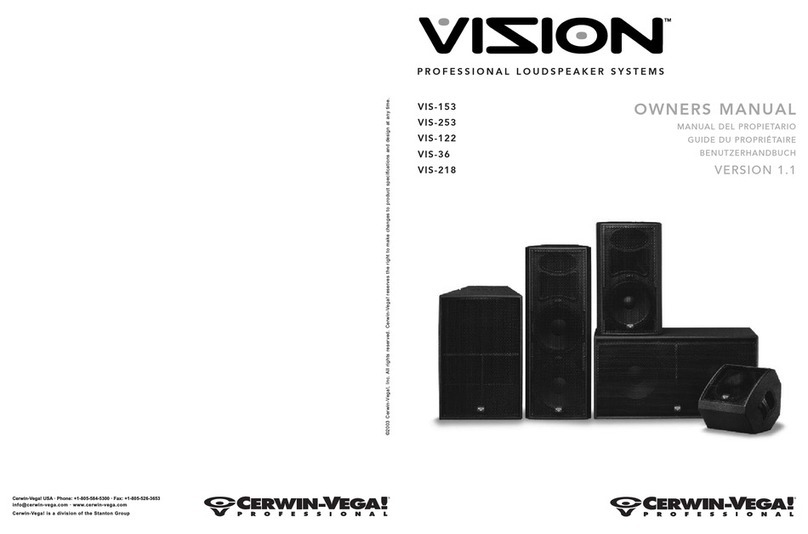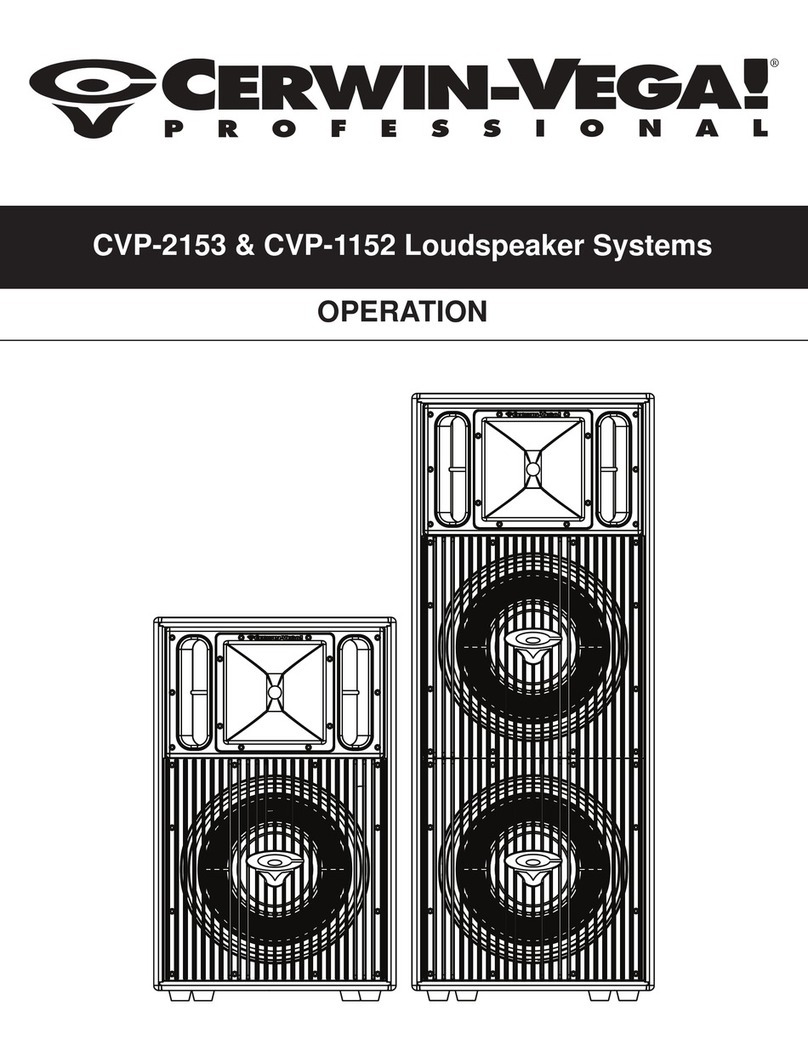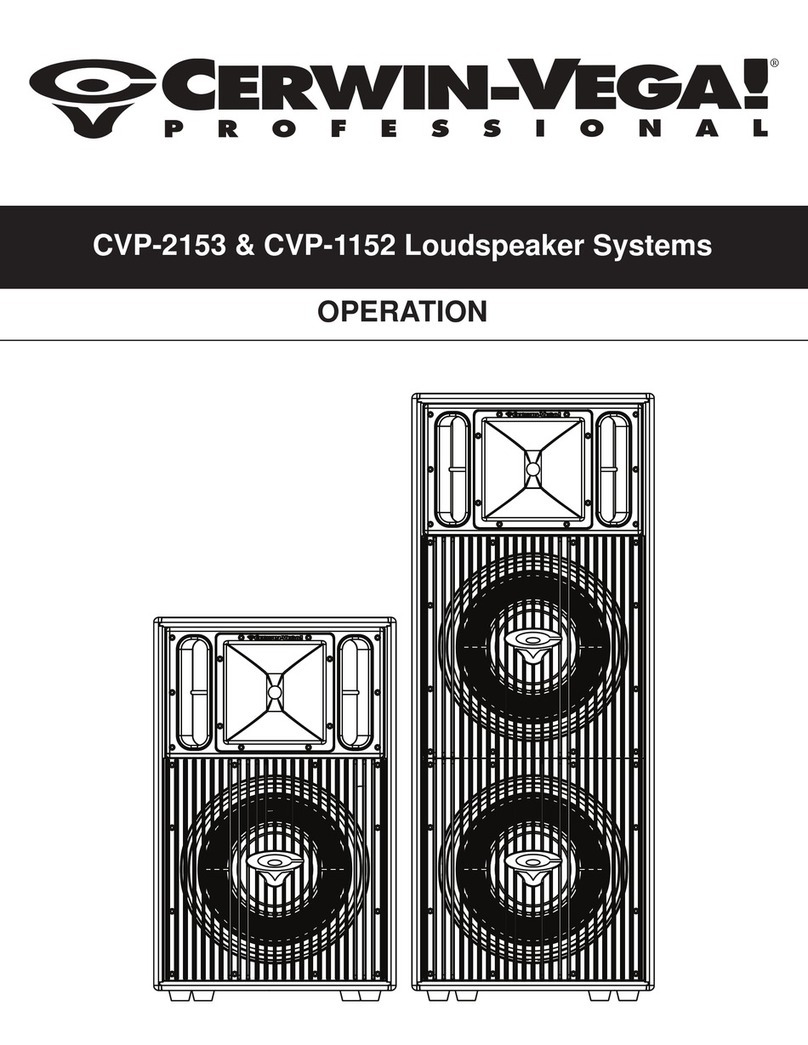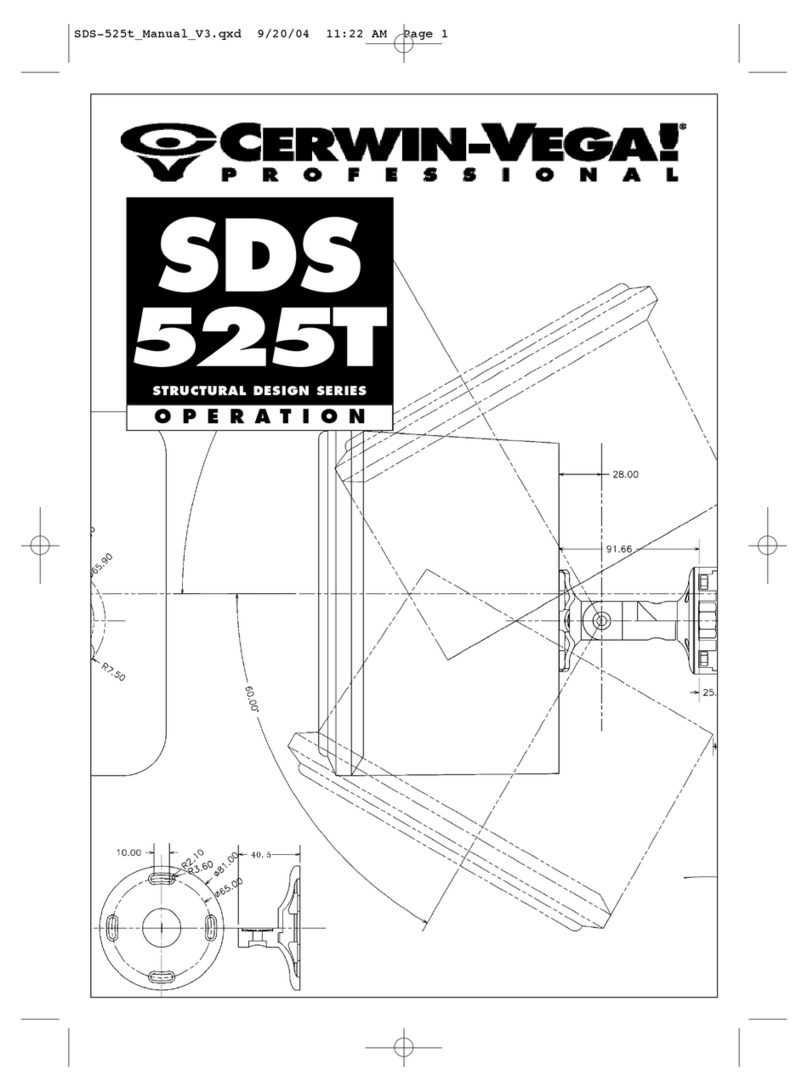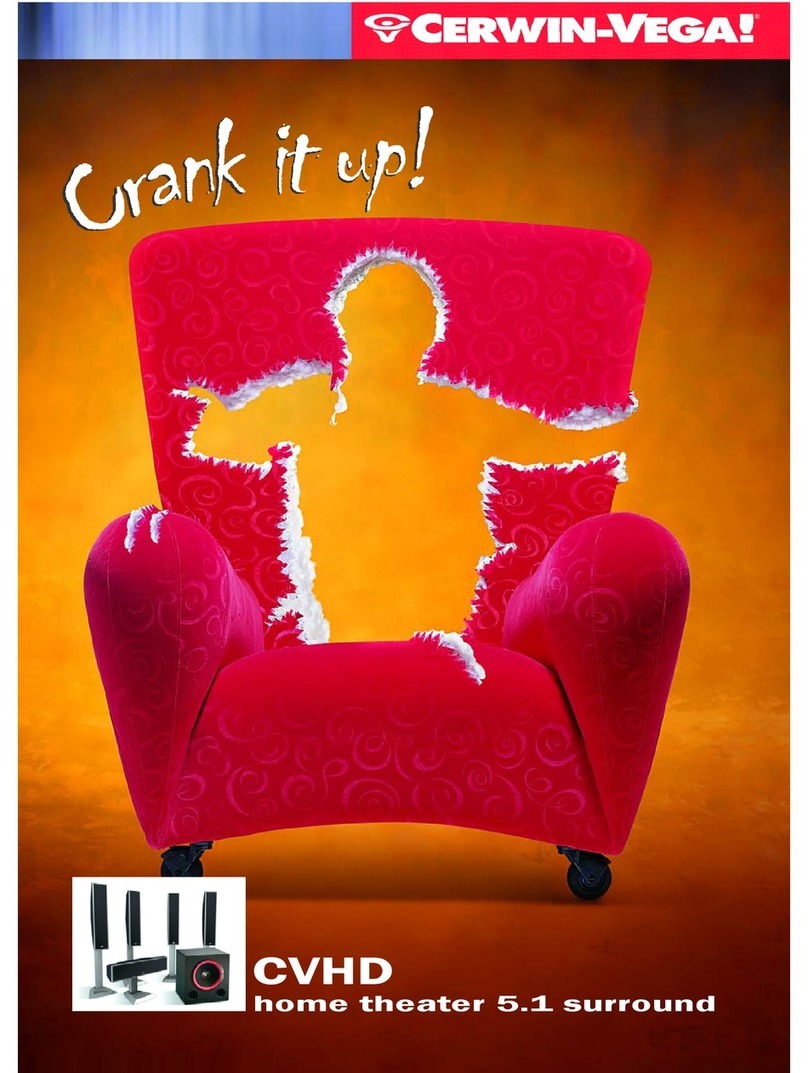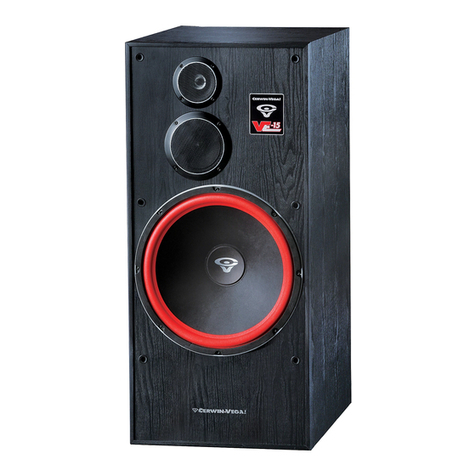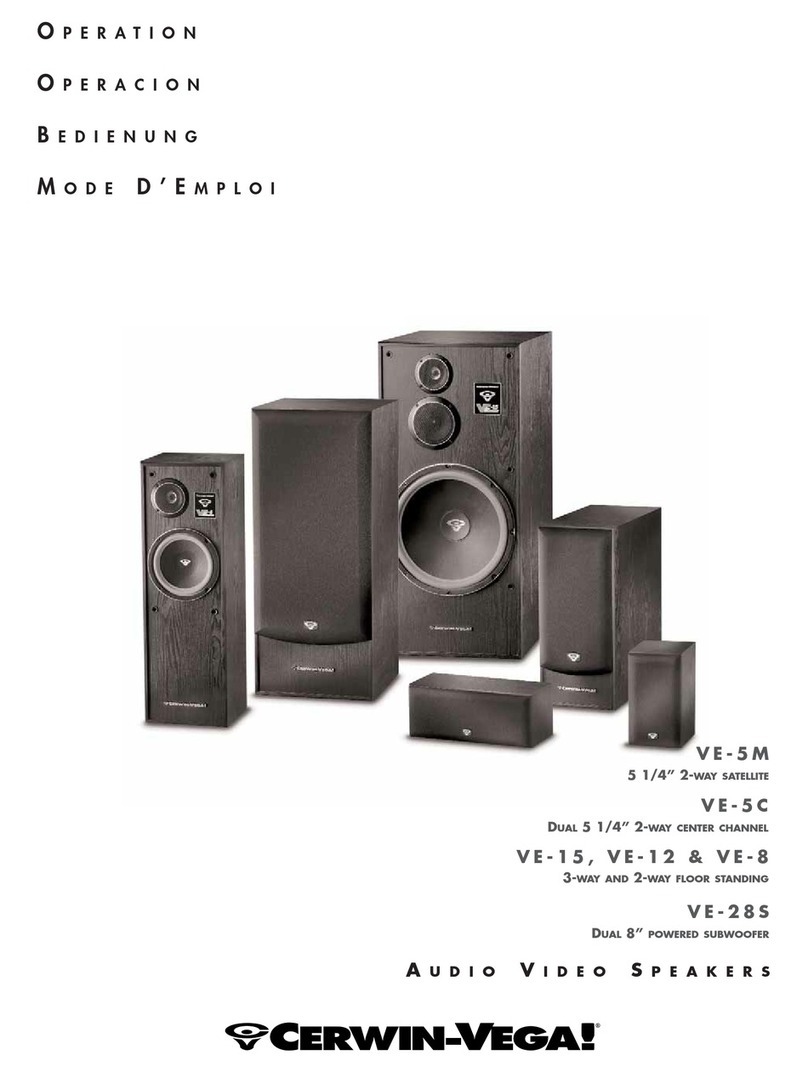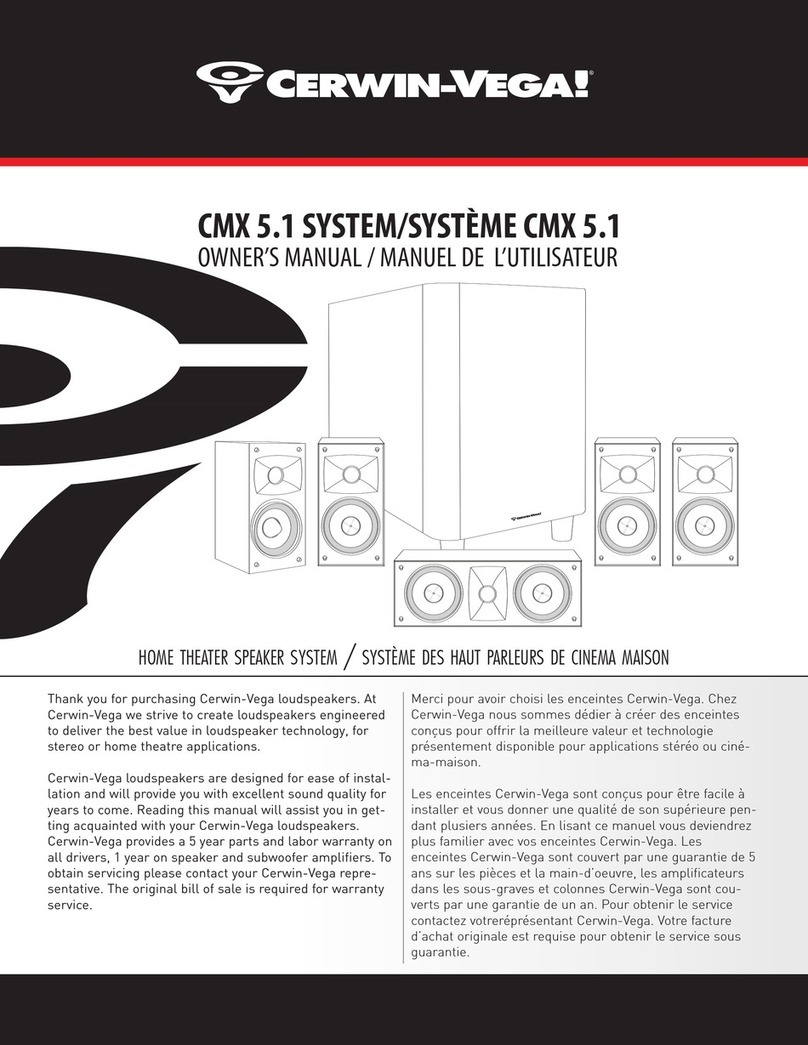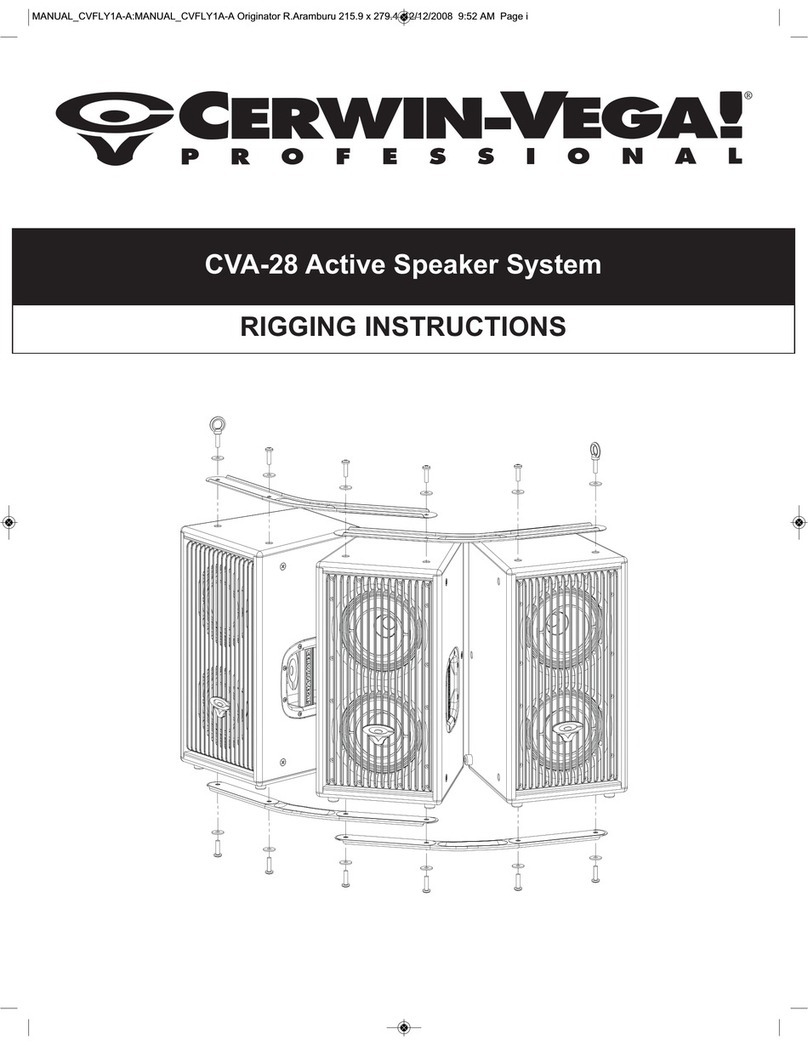
4
Cerwin-Vega! CVP-2153 & CVP-1152 Loudspeaker Systems
3. BEFORE YOU BEG N: SAFETY AND CARE FOR YOUR CVP LOUDSPEAKERS
Positioning
High and upper mid frequencies are a crucial part of the audio spectrum, and have much to do with how we
perceive clarity and intelligibility. Whereas these frequencies are the most easily located, they are also the first
to be acoustically blocked. Taking the coverage angles of the models used into consideration, be sure to set up
your speakers so that the M and H drivers are free from obstructions and the higher frequencies can reach the
entire audience (e.g. slightly above the heads of the audience). This will ensure optimal dispersion of
higher-frequency content and thus improved speech intelligibility and clarity.
Avoiding Feedback
Always place the "front-of-house” speakers (the enclosures facing the audience) in front of the microphones,
(e.g. towards the front edge of the stage). Use professional floor wedges (e.g. CVP-1152) or other dependable
monitoring systems to ensure that the performers on stage can hear themselves. Whenever possible, position
monitor speakers so that they point only to the back side of microphones.
Avoiding Feedback When Using Turntables (e.g. DJ Applications)
Turntables often produce low-end feedback: low frequencies are fed back to the pickup arm and cartridge and
reproduced again by the speakers. Common causes of low-end feedback are speakers positioned too close to
the turntable or on wooden floors or stage elements prone to vibration. To avoid this, position the speakers as far
from the turntable as possible. Placing them on a solid, non-resonating support will also help. If you are using the
CVP-1152 model speakers, try mounting them on stands. This will minimize direct contact between floor and
speakers and reduce vibration.
Protecting Your Speakers
Next to following common-sense rules like exercising caution while setting levels to avoid overdriving your power
amps, and understanding and respecting the physical limits of your system, there are a couple reliable methods
of protecting your speakers – and your entire system – using additional equipment. Using a high pass filter to avoid
excessive low frequencies, low-frequency rumble or extreme low frequencies can lead to an excessive
displacement of the speaker diaphragm and in turn to permanent damage. Using an equalizer or a low-cut/high
pass filter to eliminate the low frequencies below the response curve of the speaker can effectively prevent this.
Most consoles and outboard equalizers, as well as many other outboard signal processors and of course speaker
management systems provide a high pass filter. The use of a high pass filter in the signal path is especially
recommended when using turntables and/or CD players as signal sources. CD players often produce extremely
low frequencies, which can lead to excessive diaphragm displacement. Using a limiter to limit the output level,
Insert the limiter between the mixing console output and your power amp. Many types of outboard signal
processors and most speaker management systems include limiters for this application. Used properly, they can
eliminate overdriving of your audio signals and effectively suppress dangerous signal peaks, which can not only
degrade the sound quality, but also cause permanent damage to your speakers and other system components.
Power Amplifier Selection
Choosing the right power amplifier has a major effect on the performance of your speakers. The amplifier should
always provide at least as much power as the speaker system is capable of handling. In order to ensure precise
reproduction of brief, high-power transients, the amp should provide about twice as much power as the
speakers can handle.The minimum recommended inputpower ratings for CVP-1152 and CVP-2153 systems are
displayed in the Specifications Table.
